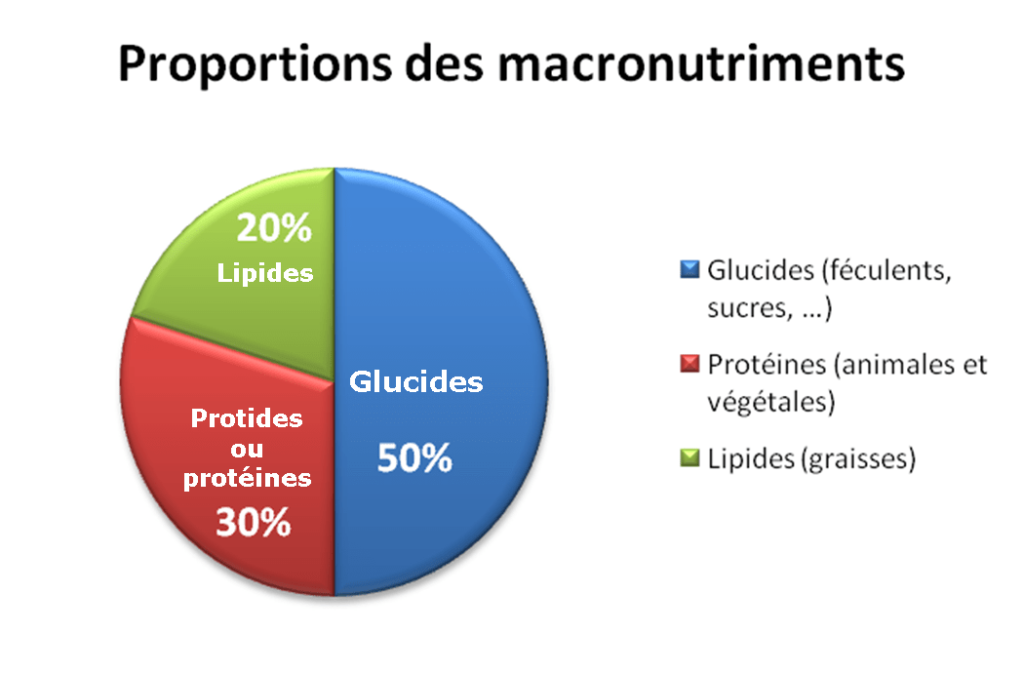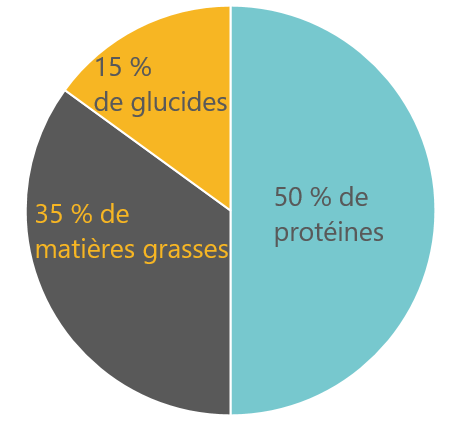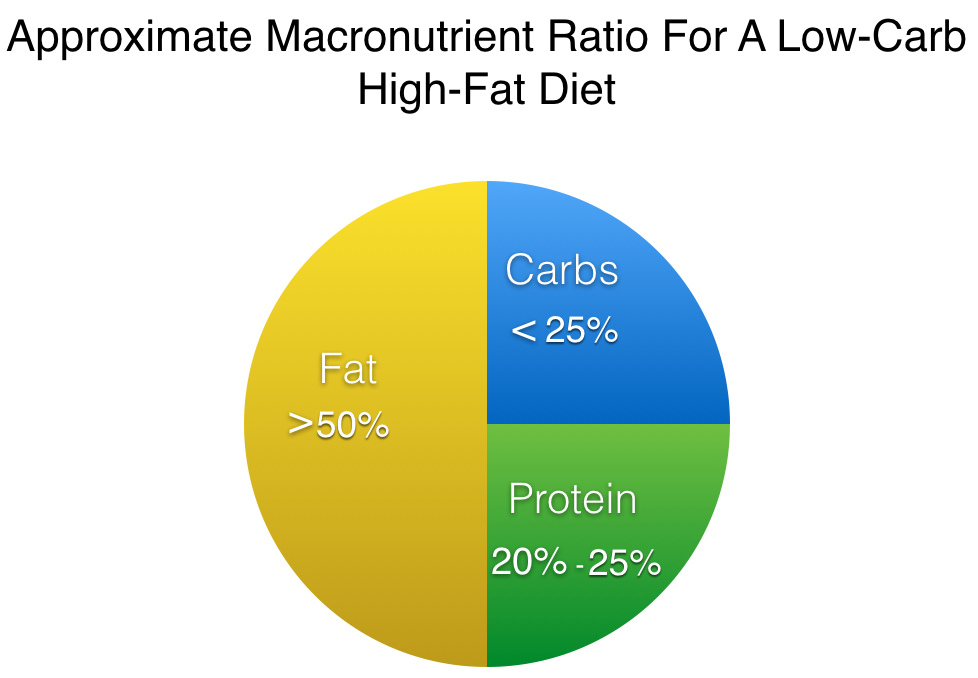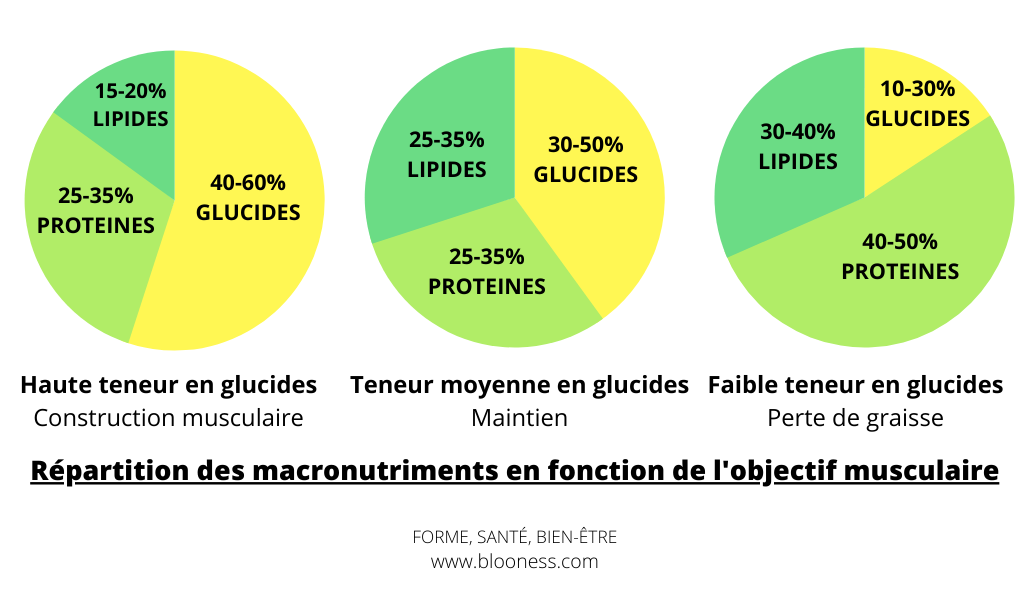The foods we eat contain macro-nutrients. But what exactly does this mean?
Definition of a macro-nutrient
The macronutrients that make up our diet are :
- visit carbohydrates Carbohydrates: also known as carbohydrates, or more commonly sugars, are the main source of energy. They also contain the fiberswhich we'll define a little later.
- visit lipids Fatty acids: also known as fatty acids or fats, are the molecules that make up organic fat. They play an important role in the constitution of cell membranes, energy production, body temperature and, more generally, in human metabolism.
- and proteins These molecules are essential to the cell life and the formation of human tissue (muscles, hair, skin, etc.).
Macronutrients are molecules that provide energy to our organism, or are directly or indirectly involved in metabolism. They are called "macronutrients" to differentiate them from micronutrients, which are the most important ones. vitamins, mineralsenzymes, etc...

Macronutrients - proteincarbohydrates and lipids - each has an important and unique role in the body, from weight management to hormonal balance, immunity and development. The question is how to distribute them.
How are macronutrients distributed?
As we've seen, the three macronutrients are important for health, longevity and the body's equilibrium. However, their distribution is still the subject of controversy. There are several schools of thought on this subject:
This content is part of the guide Blooness, the guide to the ideal human diet, the summary of which you can find here 🌱🥑
- Visit official nutritional recommendations dating back to the 20th century recommend eat mostly carbohydratesand a minority of lipids and proteins.

- Some slimming diets as well as nutritional programs for strength training have overturned this distribution, by granting a much greater emphasis on proteins.

- Last but not least, certain increasingly fashionable food trends, such as low-carb or ketogenic dietadvocate a return to a more ancestral way of eating, which makes the lion's share of lipidsand the hunt for carbohydrates, especially those derived from industrial foods.

We'll look at the advantages and disadvantages of these different distributions later. In the meantime, whichever method you choose, the various schools of thought agree that the distribution will depend on the chosen objective.
So, when asked:
French-speaking subscribers will receive the newsletter in French, and all others will receive an English version.
What is the best distribution of macro-nutrients?
The answer is: it depends on your goal and your metabolism.
If, for example, you have a metabolism that "fattens" enormously despite calorie restriction, nutrition experts will generally advise you to reduce the proportion of carbohydrates in your diet in favour of fatsContrary to popular belief, carbohydrates tend to increase body fat.
REMINDER: this article is one of the chapters in the Blooness feeding guidea guide to the ingredients of the ideal diet for humankind.
On the other hand, if you're an athlete and your goal is to achieve muscle gainor even massand you're "dry", it's in your best interest to follow high-protein, fairly carbohydratesThese are designed to build muscle tissue. Beware, however, of putting on weight and having to go back to the drawing board with an often trying dry period.

To answer the same question about the ideal distribution of macronutrients in the diet, let's take a closer look at what the official nutritional recommendations tell us...
Next chapter: official nutritional recommendations in terms of macronutrients
Previous chapter: Blooness guide contents


2 Responses
Superb article that sums up sports nutrition very well.
As a nutrition coach myself, I can confirm that the distribution of macronutrients should depend on the target. However (I must still be old-fashioned =) ) I'm a fan of personalized calculations based on a person's MB, NAP and DEJ.
https://promuscu.com/content/9-les-nutriments-et-macronutriments-en-musculation
I'd like to ask you if you think the macronutrient calculation is still relevant, or should we refer to percentages depending on the person?
Great article!
Hello Guillaume,
Thanks for your comment!
Without being an expert in sports nutrition, the consensus is that the calculations are still relevant, as they at least have the advantage of establishing a first nutritional draft based on daily expenditure. Nevertheless, one of the biases is that we sometimes tend to overestimate our caloric expenditure. Our ancestors spent far more energy than we do living in comfort, and our expenditure is generally confined to sporting effort, with the exception of a few strenuous occupations.
Then, once the nutritional program has been established thanks to MB and DEJ calculations, it would be wise to follow the reflection on the mirror and adapt accordingly.
Thank you for sharing your very interesting article for athletes, I will add it as a link in this article that I will update soon 🙂